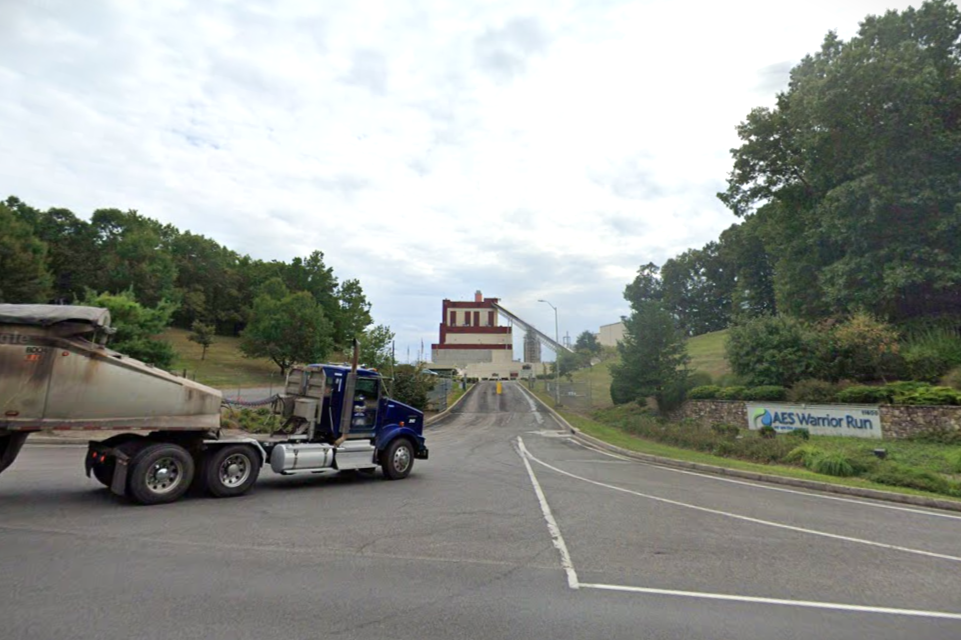Is a deal in Western Md. to help utility customers and accelerate the shutdown of a coal plant too good to be true?

The Maryland Public Service Commission took a vote recently that could save electric ratepayers millions of dollars and accelerate the closing of one of the state’s last remaining coal plants.
It sounds like a win-win situation for the climate and consumers — and that may turn out to be the case.
But nothing is ever simple when it comes to policies and regulations that govern electric utilities. They’re dense and unfathomable and contain a language all their own under the clearest of circumstances.
The economics of the industry are also complicated and ever-changing. One consumer watchdog suggests the PSC vote could actually wind up hurting the pocketbooks of electric utility customers.
The topline news is that the PSC voted unanimously in late June to allow Potomac Edison, the utility that serves most of Western Maryland, to get out of its contract to buy power from the coal-burning AES Warrior Run generating station south of Cumberland. The utility, which is owned by the Ohio-based energy giant FirstEnergy Corp., will pay AES $357 million to break its contract almost seven years early.
As a result, the Warrior Run coal plant could stop burning coal as early as May of next year — and Potomac Edison believes consumers could save as much as $80 million because certain surcharges associated with the contract will no longer apply.
“Potomac Edison is committed to helping customers save money and stabilize their electric bills, and this agreement is a step toward keeping bills affordable and more predictable for our customers,” Linda Moss, president of FirstEnergy’s Maryland operations, said in a statement last week.
AES, an international power generating company, has told investors it wants to get out of the coal business by 2025.
“This agreement is another milestone in our journey toward decarbonization,” Andrés Gluski, AES president and CEO, said when the deal was announced earlier this year.
But what happens next to the coal plant and its 70 employees is very much an open question, as Western Maryland continues to lose large industrial employers. So is whether Potomac Edison’s anticipated savings for customers will actually materialize.
The utility’s contract to buy coal power at a fixed rate from the AES Warrior Run generating station near Cumberland dates back to 2000, when the plant opened, and was a requirement of the federal Public Utility Regulatory Policies Act (PURPA) passed by Congress in 1978. That law, enacted in response to the energy crisis of the 1970s, was designed to encourage smaller-scale, non-utility owned electric power generation. At the time, most electric power generation in the U.S., including in Maryland, was owned by electric utilities. PURPA required — and continues to require — utilities to buy electric power from certain smaller facilities at a relatively low cost.
Potomac Edison took most of the power it bought from Warrior Run and sold it to PJM, operator of the regional electric grid, rather than using it to supply electricity directly to its customers. The contract, which was scheduled to end in 2030, required Potomac Edison’s Maryland customers to pay a surcharge on their electric bill based on the price at which Potomac Edison resold the power it purchased from Warrior Run. The surcharge amount varied greatly due to fluctuations in the electric power market.
While customers will continue to see some surcharges on their bills through the seven-year term of the buyout, Potomac Edison has told state regulators that an early end to the Warrior Run contract has an estimated 90% probability of saving customers money over the remaining term of the agreement.
But David S. Lapp, head of the Maryland Office of People’s Counsel, which represents consumers’ interests on utility matters, said that given the volatility of the market on any given day, there’s no guarantee any of the savings will be realized by ratepayers.
“You’re sort of boxing customers in [to a financial arrangement] without any real evidence,” Lapp said. He added that AES is getting “a windfall” from Maryland consumers on a plant that was almost certainly headed for retirement and is likely no longer profitable.
Some industry officials have expressed surprised that Lapp’s office, which regularly pushes the PSC and state policymakers to do more to combat climate change, isn’t excited about a plan that could expedite the end of coal production in Allegany County.
“We want coal plants to be retired, too,” Lapp explained. “We don’t want to be strapping customers to bail out a coal plant that might not be profitable anyway.”
Benjamin Baker, a senior policy adviser at the Maryland Public Service Commission, conceded that the savings aren’t guaranteed, and said commissioners were considering “a probability game” when they voted to approve the deal.
“What’s the probability?” Baker said. “I can’t say 100% we’re going to see all these savings. It’s a probability question when you talk about a contract on the futures market.”
Baker said the PSC commissioners were largely operating in uncharted territory when the proposal to end Potomac Edison’s contract with the Warrior Run coal plant came before them, because a request to terminate a PURPA agreement hasn’t come before the agency in decades, if at all.
Lapp contends the PSC rushed its decision on the proposed agreement, which was announced in mid-April and came with a deadline of June 30 for the commission to act.
“They essentially told the PSC, ‘we’re going to run your docket for you,'” Lapp said.
In May, he wrote a letter requesting that the PSC take longer to consider the question — as did Paul Pinsky, director of The Maryland Energy Administration, who called the proposed deadline for PSC action “unreasonable.”
“While MEA believes the actions proposed for the Warrior Run facility represent a significant step towards the eventual transition away from coal as a fuel source in the state, it is incumbent upon the state to learn more about this suggested payout and determine if it is truly in the best interest of Potomac Edison’s customers going forward,” Pinsky wrote.
The PSC held a hearing on the proposed agreement in early June but did not feel comfortable making a decision immediately, Baker said. The commissioners sought more information from Potomac Edison and AES and took their vote almost three weeks later. They did not think taking more time would unearth more information, he said.
Potomac Edison serves about 285,000 customers in all or parts of Allegany, Carroll, Frederick, Garrett, Howard, Montgomery, and Washington counties.
‘Interesting opportunities to repurpose the Warrior Run site’
Even before AES announced that it hoped to get out of the coal business by 2025, it was apparent that the Warrior Run plant was running on borrowed time. There are only two other coal plants in the state, the Brandon Shores and H.A. Wagner power plants in Anne Arundel County’s Curtis Bay, and they have committed to converting to other fuel sources by 2025.
“Following the contract termination, we see interesting opportunities to repurpose the Warrior Run site for low carbon solutions that continue to serve local communities,” said Gluski, the AES CEO.
Under the terms of the agreement approved by the PSC, AES will continue to operate the Warrior Run plant through at least next May. AES in a statement said it will “work with existing employees to manage a responsible transition” and will “maintain full operational control of the site following decommissioning.”
Asked whether the agreement that the PSC just approved is seen in his community as a positive development, Del. Jason C. Buckel (R-Allegany), said, “it remains to be seen.”
“It depends what we’re able to transition the Warrior Run facility to,” he added.
Buckel said AES is testing whether producing biomass energy at the plant is feasible, and early signs have been encouraging.
“We need all the in-state electrical generation capacity that we can get,” he said.
But Buckel fretted that an ancillary business at the plant, selling digestible-grade carbon to the carbonated beverage industry, which is a byproduct of coal production — and, he said, a sign of how clean the operations are at Warrior Run — could suffer when coal is phased out.
“There’s a decent chance you have drunk some of the carbonated byproduct of Warrior Run,” he said.
Buckel also expressed skepticism that consumers will see the estimated savings that Potomac Edison has forecast, noting that new surcharges are routinely added to ratepayers’ electric bills.
“Nobody’s rates are going to go down,” he said.




 Creative Commons Attribution
Creative Commons Attribution